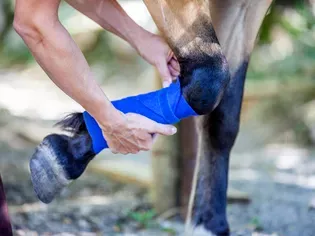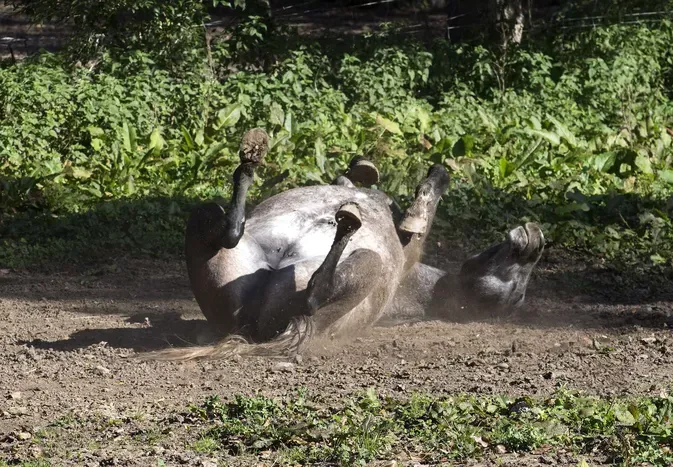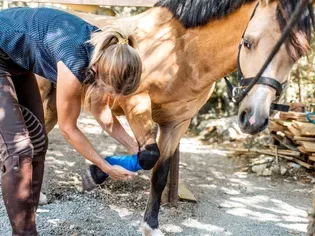Why Horses With Broken Legs Are Often Euthanized
Updated on 04/26/24

Why Horses With Broken Legs Are Often Euthanized: A Comprehensive Guide
Horses, with their graceful movements and majestic presence, hold a special place in our hearts. However, as with any animal, their well-being can be compromised by various health conditions, one of the most severe being broken legs. In such cases, the decision of whether to euthanize the horse often arises, and it can be a heartbreaking one for owners and caregivers.
In this comprehensive guide, we delving into the complexities of this difficult decision. We should first understand the reasons behind euthanasia in horses with broken legs, the factors that influence it, and the ethical considerations that surround it.
Understanding the Reasons for Euthanasia
Euthanasia is a humane way to end the life of an animal when it is suffering from an injury or illness that cannot be treated or alleviated. In the case of horses with broken legs, the reasons for euthanasia generally fall into one or more of the following categories:
1. Severity of the Injury:
Broken legs in horses can range from minor fractures to complex, comminuted fractures involving multiple bone fragments. The severity of the injury plays a crucial role in determining whether euthanasia is necessary. Severe fractures that cannot be surgically repaired or are likely to cause permanent lameness may warrant euthanasia to prevent further suffering.
2. Age and Health of the Horse:
The age and overall health of the horse also influence the decision-making process. Older horses or horses with underlying health conditions may not have the resilience to withstand the trauma of surgery or the rehabilitation process. In such cases, euthanasia may be considered the most compassionate option.
3. Financial Considerations:
Treating a broken leg in a horse can be an expensive and prolonged process. The cost of surgery, hospitalization, rehabilitation, and ongoing care can be substantial. For some owners, the financial burden may outweigh the potential benefits of treatment, making euthanasia a more viable option.
Factors Influencing the Decision
The decision to euthanize a horse with a broken leg is never made lightly. Several factors are carefully considered, including:
1. Prognosis and Treatment Options:
The prognosis for a horse with a broken leg depends on the severity of the injury, the horse's age and health, and the availability of appropriate treatment options. If surgery is possible and expected to result in a good outcome, euthanasia may not be necessary.
2. Quality of Life:
Even if a horse can physically recover from a broken leg, the injury may have long-term consequences that affect its quality of life. Permanent lameness, chronic pain, or the inability to perform its intended purpose may all contribute to a decision for euthanasia.
3. Owner's Resources and Commitment:
The owner's financial resources, time constraints, and level of commitment to the horse's care also play a role in the decision-making process. If the owner is unable to provide the necessary care and support, euthanasia may be the most responsible option.
Ethical Considerations
The decision to euthanize a horse with a broken leg raises ethical considerations that must be carefully weighed. Some individuals may view euthanasia as a cruel and unnecessary act, while others may see it as a compassionate and responsible way to end suffering.
Ultimately, the decision of whether to euthanize a horse with a broken leg is a highly individualized one. It requires careful consideration of all relevant factors, including the horse's welfare, the owner's circumstances, and the ethical considerations involved.
Examples of Euthanasia Decisions
The following examples illustrate the complexity of euthanasia decisions in cases of broken legs in horses:
1. A young, healthy horse with a clean break in its leg:
In this scenario, surgery with internal fixation is likely to be successful and result in a full recovery. Euthanasia would not be recommended unless there were unforeseen complications during or after surgery.
2. An older horse with multiple fractures and underlying health conditions:
Due to the horse's age and health issues, surgery may be risky or unsuccessful. The horse may also have a poor prognosis for quality of life even if it survives the injury. Euthanasia may be considered the most compassionate option in this case.
3. A horse with a severe fracture in a remote area:
If the horse is located in a remote area and veterinary care is not readily available, euthanasia may be the only humane option to prevent prolonged suffering.
Conclusion
Euthanasia for horses with broken legs is a difficult and emotionally charged decision that requires a compassionate and informed approach. By considering the severity of the injury, the horse's age and health, the financial implications, and the ethical considerations involved, horse owners can make the best possible choice for their beloved animals.
Explore More Pets

Pony Breeds
The Difference Between Horses and Ponies

Horse Diseases & Conditions
What Do I Do If My Horse Colics?

Pony Breeds
Horse and Pony Care by the Day, Week, Month and Year

Horse Grooming
Mange in Horses

Horse Diseases & Conditions
Grease Heel in Horses

Light Horse Breeds
Gypsy Vanner Horse Breed Profile

Horse Diseases & Conditions
Girth Galls and Saddle Sores

Pony Breeds
Shetland Pony Breed Profile